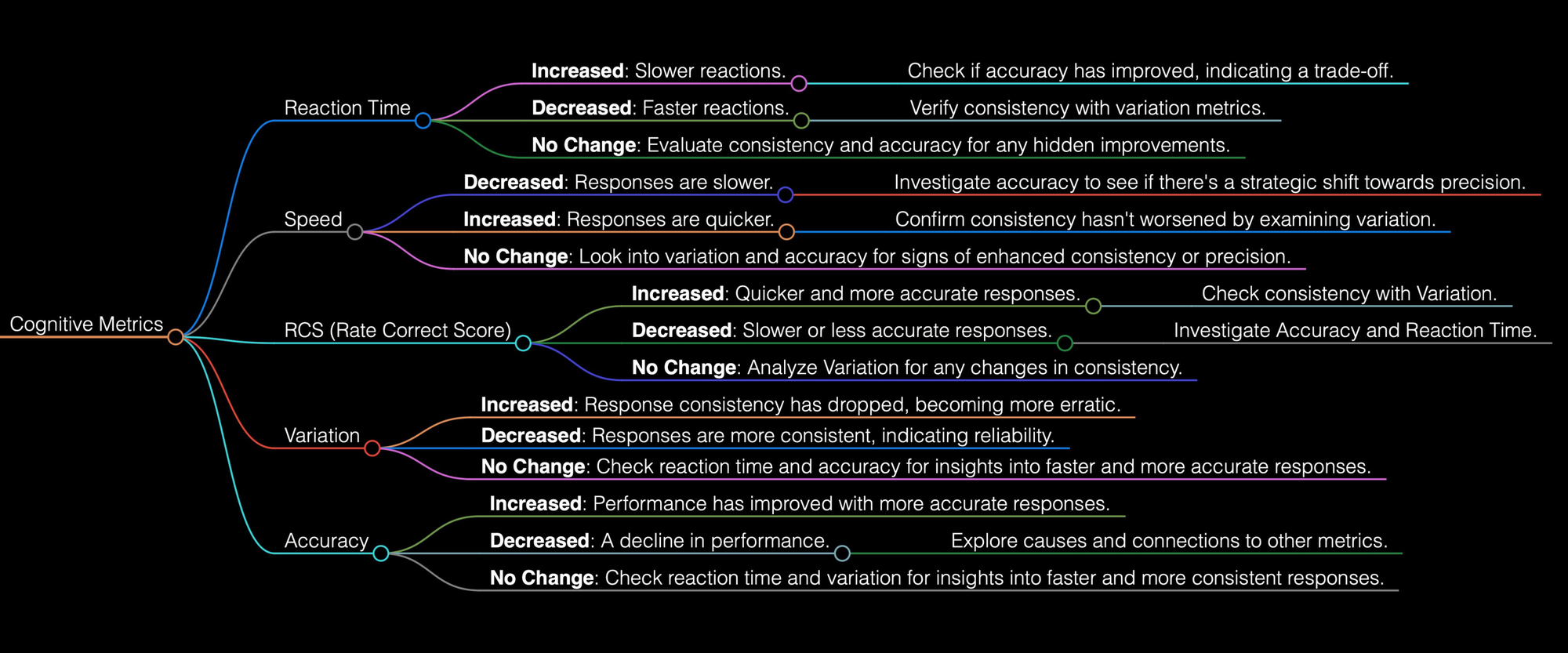Precision in Play: Decoding Accuracy
There is no advantage to an athlete being accurate if they are slow or accurate but inconsistent.

Whether it's hitting a target, making a precise pass, or executing a complex movement pattern, the frequency with which an athlete can correctly perform these actions underscores their skill and effectiveness. However, the significance of accuracy extends beyond the simple tally of hits and misses. It is crucial to delve deeper into the data to ensure that fast reactions and consistent responses accompany their precision. There is no advantage to an athlete being accurate if they are slow or accurate but inconsistent.
Now, let's move on to how to interpret accuracy data.

Increased Accuracy
When accuracy increases, it indicates that the athlete is making fewer errors and hitting the target or executing their tasks more precisely. This improvement is a direct marker of the athlete's growing proficiency and the effectiveness of their training regimen. However, while it is important to celebrate enhanced accuracy, it is crucial to monitor whether this precision comes at a cost to other aspects of performance, such as speed or variability. Ideal performance enhancement occurs when accuracy improves alongside maintained or increased speed and reduced variability, ensuring that the athlete becomes faster and more consistent while also becoming more precise.
Decreased Accuracy
A decrease in accuracy can be a cause for concern, as it suggests that the athlete is making more errors than before. This decline could be due to various factors, such as changes in training, increased fatigue, or psychological stress. Addressing a drop in accuracy requires a comprehensive review of the athlete's training to pinpoint and correct underlying issues.
No Change in Accuracy
If accuracy remains stable, with no significant improvements or declines, the analysis should extend to other performance dimensions, like reaction time and variability. Consistent accuracy is positive, particularly if other metrics show progress. For example, if an athlete maintains accuracy but achieves faster reaction times or shows less variability in their performances, these are signs of overall growth. It indicates that the athlete is managing to uphold their precision while enhancing other aspects of their performance, which can be crucial in dynamic and high-pressure sports environments.
In all cases, understanding the balance and interaction between accuracy and other performance metrics is key to developing effective training strategies and achieving optimal athletic performance. This comprehensive approach ensures that improvements are sustainable and contribute to long-term success.
🌐 Connect With Us
🌍 Soma Technologies: Engineered to enhance human performance.
📸 Instagram: Dive into our world through exclusive photos and stories.
👥 Facebook: Join our community for the latest updates and discussions.
📈 LinkedIn: Connect with us professionally and stay informed about industry news.
🎥 YouTube: Watch our latest videos, tutorials.
🐦 X: Follow us for instant updates, news, and engaging tweets.
